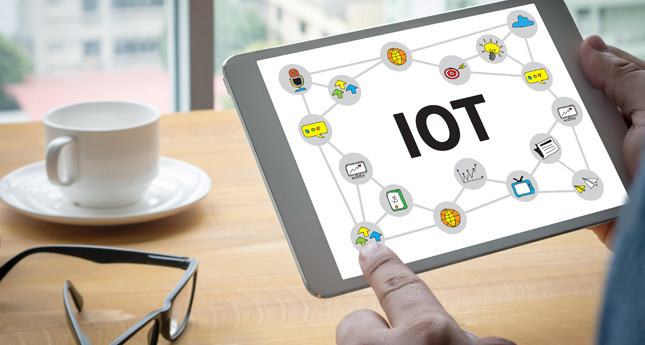

Dave Davies, CEO of www.wireless-sensors.co.uk, explains why HVAC installers should take a second look at the internet of things, which he believes is set to revolutionise the industry.
The Internet of Things (IoT) is creating a revolution in interactivity. Instead of being made up of separate appliances, all controlled in different ways, homes and offices are becoming networks of connected devices. The IoT is making the central control of a number of appliances and devices possible, giving users remote access to everyday functions such as light, security, and temperature that previously required physical interaction.
HVAC systems are no strangers to this wave of innovation. From controlling the temperature of the living room from your phone, to self-troubleshooting industrial systems, connected technology is changing the way we think about temperature and comfort. We're a long way from HAL yet, but better data gathering and automated functions are making machines look much smarter.
HVAC systems aren't just about comfort. They're about productivity, health, and money. Integrating temperature control systems with convenience and analysis features creates better human environments.
Wireless mobile devices are changing the way people live their lives. With advances in wireless connectivity come chances for HVAC manufacturers to deliver a kind of usability and customer service that doesn't just keep up, but actively drives quality of life improvements. Mobile devices can be used not only to control HVAC systems, but to display data, create schedules, and identify problems.
Machine learning has a particularly exciting relationship to HVAC systems. Put simply, machine learning is the ability of a system to take collected data, analyse it, and not only react, but to predict future events. An HVAC system that uses machine learning might automatically adjust to weather forecasts, or prepare ahead of time for periods of peak activity within a building.
Wireless temperature sensors can be cheaply, quickly and easily installed to monitor and control your HVAC in the cloud. It's a great way to save costs, and gives peace of mind to both installers and end users.
Reaching IoT's full potential
Adding HVAC systems into our already connected world adds a new level of functionality to homes and businesses. It's when you combine the potential of IoT with machine learning that you can start imagining the full potential of an HVAC system.
For me, two of the most exciting advances are the automation possibilities. With the right data, HVAC systems can start predicting the needs of their buildings and run their own diagnostics to make maintenance a breeze.
Data gathering and prediction
Mobile devices don't just allow people to control their systems from the palm of their hand; it lets systems communicate back.
Giving users access to data such as when the unit is working hardest, when temperatures peak or dip beyond normal and require adjustment, and other points of interest, allow them to set better schedules and understand their energy usage. But we can take the use of this data one step further. The internet of things potentially gives HVAC systems access to additional data gathering tools, such as weather forecasts, information about when the building is being used or when heat-generating tools are being used (a room full of computers in an office, for example), and a host of other variables. Tied in with some basic machine learning, HVAC systems can be trained to prepare ahead of time for fluctuations in temperature, rather than react to them.
Preventative maintenance and troubleshooting
One of the biggest challenges that comes with an HVAC system is maintenance. It's difficult to gauge which parts may or may not be affecting the system's efficiency, and if something does break it can be just as difficult to work out which parts need replacing. Without adequate preventative care, repairs can become quite the nightmare. The additional feedback possibilities that come with the IoT can fundamentally change this dynamic. Now, systems have the potential to talk to users and tell them exactly what's wrong, which parts are wearing out, what needs replacing and when. Smarter systems will be able to provide feedback well in advance of any repairs being needed and provide quick notifications about sudden changes.
For me, all this boils down to one fundamental pattern of improvement: Usability and user experience. The children of HVAC systems, the IoT, and machine learning will become eminently controllable, responsive, and self-sustaining. Systems and parts will last longer, and minor problems will be caught quickly, before time exacerbates them into major repair jobs.
Users will be able to go beyond setting schedules, into defining parameters that the system automatically adjusts to. Systems will be able to set their own optimal cooling and heating times to save energy.
Users can already control so much in their homes and offices through their phone and by voice. The more devices that HVAC systems become compatible with, the greater the potential for innovation in user experience and system longevity. With the right integration of devices and machine learning, systems could start ordering their own replacement parts and sending out requests to a company’s maintenance department autonomously.
If you'd like to keep up-to-date with the latest developments in the heating and plumbing industry, why not subscribe to our weekly newsletters? Just click the button below and you can ensure all the latest industry news and new product information lands in your inbox every week.